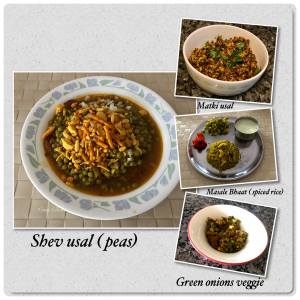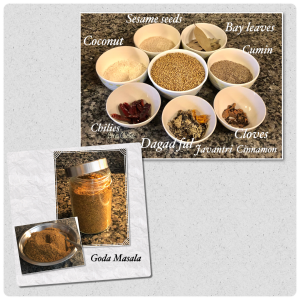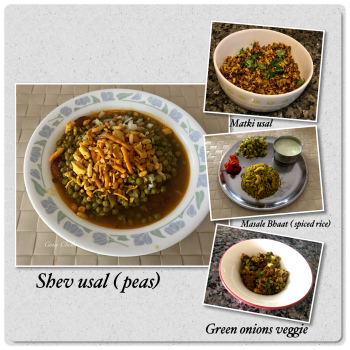Summers here in Finland are quite different from what we have been accustomed to previously in India. Sometimes there is beautiful sunshine, or other times, cold wind needing a sweater or similar and sometimes it just rains – rather pours, and this week was just one of those mornings looking out from my kitchen window.

Reminiscing on those warm mornings, and the summer activities that needed to be done. Yes, this was the season when fresh spices were harvested, the time to make the spice mix, the mango season which in turn was time to make pickles, and the lentil dumplings which would be dried up in the summery heat. These dumplings could then be used during the cold seasons when one craves warm, robust foods. All this also reminded me of the potato chips, and the sago and potato spirals which were sun dried and stored to be fried and eaten later.
“I think that food ties us to our community and our traditions, and it’s the thing that makes us feel good and connected”, quoting American author Kathy Freston.
So, coming back to the spices and this time a detailed write up on our very traditional spice blend. Called “Goda (sweet) masala” or “Kala (black) Masala,” this Maharashtrian spice blend can be found in every household, and the best part is that each family will have their own recipe for it passed on over several generations.
 Totally home-made, the spices are roasted, some in little oil or some dry roasted, and the quantity varies. I usually relied on my Aai (mother) for our yearly supply, and then later, my sister-in-law would make it for us. Finally, during covid times when we couldn’t travel, we ended up making it ourselves. I got the ingredient list from my sister-in-law: Coriander seeds, desiccated coconut, cumin, sesame seeds, clove, cinnamon, bay leaves, Javantri (the outer casing of nutmeg, and is also known as mace blades), Naag keshar (Mesua ferrea, the Ceylon ironwood, or cobra saffron), red chilies, Dagad ful (Parmotrema perlatum, commonly known as black stone flower). As I read through all these names, and googled for their English names, I was fascinated by the history of its uses. There is some medicinal property to each of them, and the contents vary accordingly. A wonderful way to incorporate the healthy content to our food while enhancing the taste of our dishes.
Totally home-made, the spices are roasted, some in little oil or some dry roasted, and the quantity varies. I usually relied on my Aai (mother) for our yearly supply, and then later, my sister-in-law would make it for us. Finally, during covid times when we couldn’t travel, we ended up making it ourselves. I got the ingredient list from my sister-in-law: Coriander seeds, desiccated coconut, cumin, sesame seeds, clove, cinnamon, bay leaves, Javantri (the outer casing of nutmeg, and is also known as mace blades), Naag keshar (Mesua ferrea, the Ceylon ironwood, or cobra saffron), red chilies, Dagad ful (Parmotrema perlatum, commonly known as black stone flower). As I read through all these names, and googled for their English names, I was fascinated by the history of its uses. There is some medicinal property to each of them, and the contents vary accordingly. A wonderful way to incorporate the healthy content to our food while enhancing the taste of our dishes.
The base ingredient for this masala is the coriander seeds and then, cumin seeds, which are available during this summertime and hence freshly available and ground, with its taste lingering on in the masala. Some of the ingredients listed up above need to be dry roasted while the rest in little bit of oil and then ground together.
‘You can never forget the taste of a certain food, it is everlasting”, quoting Sanjeev Kapoor. Just a spoonful of ‘goda masala’ added to my veggies or lentils or beans or even my rice makes a difference, and the taste takes us all the way back home.

Seema Ganoo
Engineer by education, passionate photographer &
food enthusiast from India, living in Vaasa,
and is happy to contribute to this column
which combines her love for food & photography.




